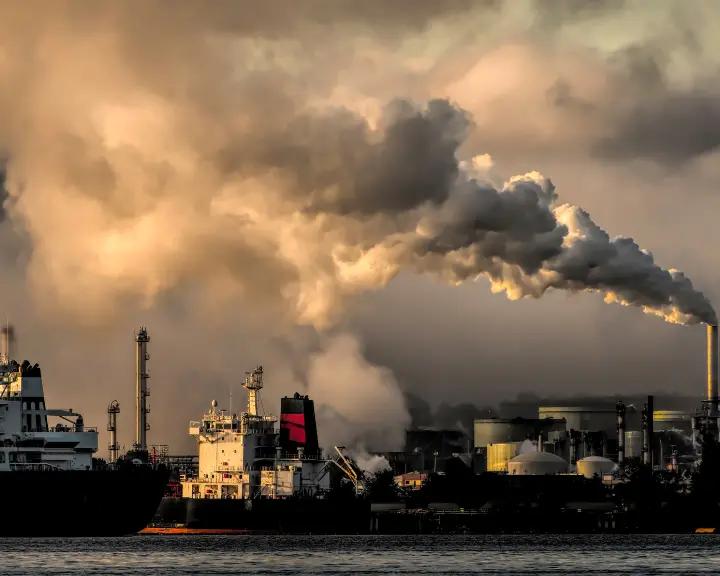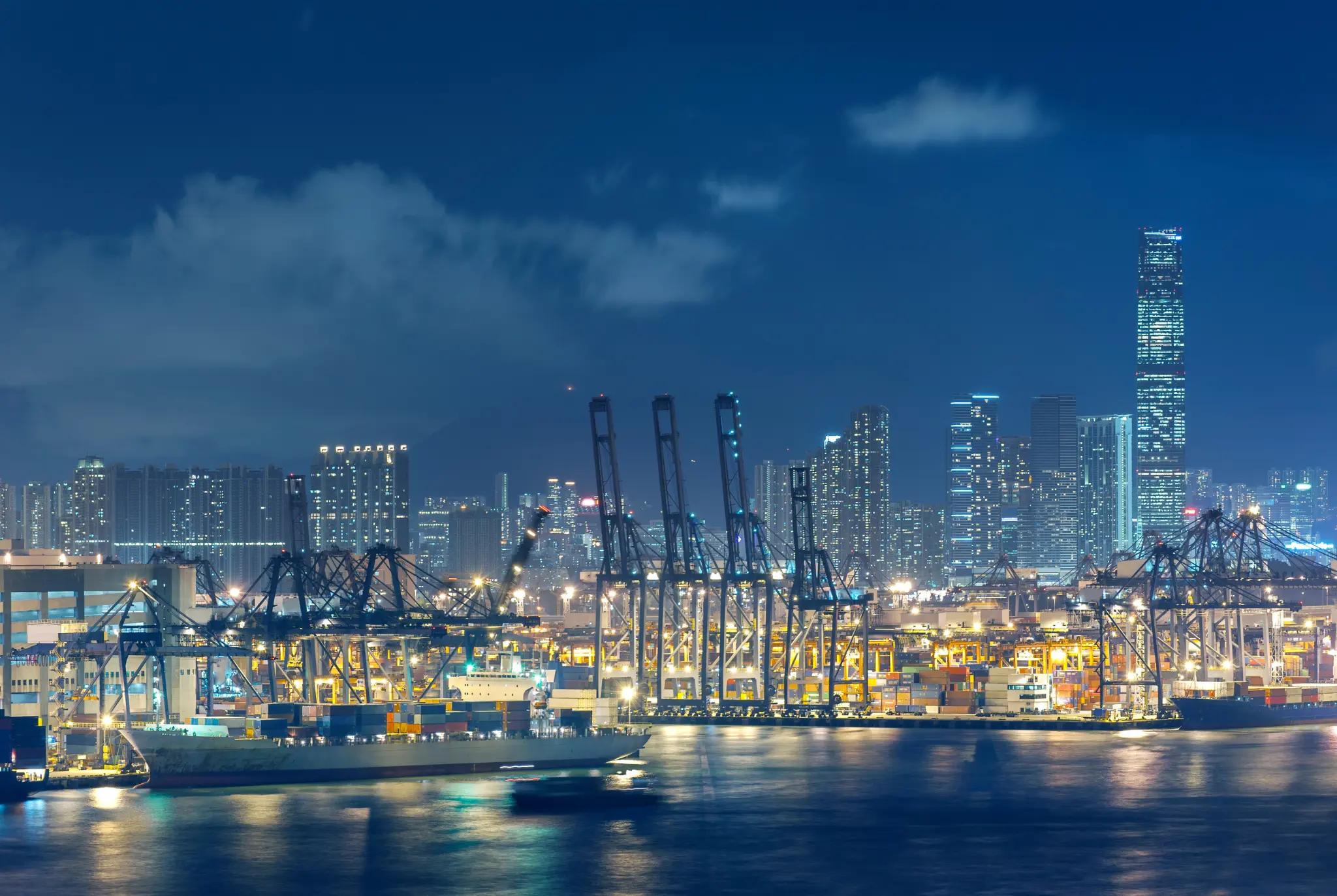Seamlessly integrate your TMS, ERP or any other platform in your ecosystem with your customers, partners, or software vendors, so you can offer CO2 data and stay ahead of SEC regulations.
Supply Chain Carbon Footprint
The supply chain carbon footprint refers to the total amount of greenhouse gases emitted throughout the entire process of producing, transporting, and delivering a product or service. This includes emissions from raw material extraction, manufacturing, transportation, and distribution. In today's globalized economy, supply chains often span multiple countries and involve many different companies, making it difficult to quantify and manage the carbon footprint of any given product or service.
Businesses are increasingly looking to reduce their supply chain carbon footprint as a way to mitigate their impact on the environment and to meet the growing demand for sustainable products and services. One way companies can do this is by measuring and reducing their own carbon footprint, including emissions from their own operations and from the transportation of goods.
Another approach is to work with suppliers and logistics partners to reduce emissions throughout the supply chain. This can include implementing more efficient transportation and distribution systems, using renewable energy sources, and investing in sustainable packaging materials.
Net zero supply chain is the goal of achieving a balance between the CO2 supply chain emissions caused by the supply chain and the carbon that is removed from the atmosphere through carbon sequestration, carbon offset or carbon capture technologies.
Logistics footprint refers to the carbon emissions caused by the transportation and distribution of goods. This includes emissions from trucks, ships, trains, and airplanes, as well as the energy used to power warehouses and distribution centers. Companies can reduce their logistics footprint by implementing more efficient transportation systems, using electric or hybrid vehicles, and investing in renewable energy sources.
Overall, the carbon footprint supply chain is a critical aspect of sustainability and climate change. Businesses that can successfully measure and reduce their company carbon footprint will be better positioned to meet the growing demand for sustainable products and services, and will be better equipped to respond to the challenges posed by climate change.
Scope 3 Emissions
Scope 3 emissions refer to all indirect emissions that are a result of a company's activities, but occur outside of the company's direct control or ownership. These emissions are associated with the use of a company's products or services and occur in the supply chain or through the disposal of a company's products. Becoming familiar with supply chain emissions Scope 3 activities and your supply chain digital nervous system is crucial to understanding how the rest of your supply chain is affecting your carbon footprint.
What are the top 15 scope 3 categories?
Scope 3 emissions are divided into 15 different categories, including:
- Upstream transportation and distribution
- Use of sold products
- Downstream transportation and distribution
- End-of-life treatment of sold products
- Employee commuting
- Business travel
- Leased assets
- Fuel- and energy-related activities not included in scope 1 or 2
- Waste disposal
- Purchased goods and services
- Upstream leased assets
- Downstream leased assets
- Investments
- Employee commuting not in own vehicles
- Fugitive emissions
For example, upstream transportation and distribution refers to emissions from the transportation and distribution of materials and products before they reach a company's own operations, while downstream transportation and distribution refers to emissions from the transportation and distribution of a company's products after they leave the company's own operations.
Scope 3 Guidance
Technical guidance for calculating scope 3 emissions is provided by organizations such as the Greenhouse Gas Protocol. This guidance includes tools such as the Corporate Value Chain (Scope 3) Standard, which provides a detailed methodology for estimating emissions from the 15 different scope 3 categories.
Furthermore, companies can also use the industry specific guidance provided by organizations such as the Carbon Trust and the World Resources Institute to help them understand and measure their scope 3 emissions.
It's worth mentioning that Supply Chain emissions scope 3 represents a significant portion of overall emissions of many companies, particularly in industries such as retail, consumer goods, and transportation. Additionally, material scope 3 emissions are emissions associated with the extraction, production, and transport of raw materials used in the production of a company's products.
Scope 3 emissions are a critical aspect of a company's overall carbon footprint and should be measured and managed as part of a comprehensive sustainability strategy. By using technical guidance and industry-specific guidance, companies can better understand and manage their scope 3 emissions, and work to reduce their overall environmental impact.
Low Carbon Supply Chain
A low carbon supply chain is one in which the carbon emissions generated by the transportation and storage of goods are minimized. Freight forwarders can achieve a low carbon supply chain by implementing a variety of strategies, such as using more fuel-efficient vehicles and equipment, optimizing routes to reduce transportation distances, and consolidating shipments to reduce the number of trips needed.
The supply chain footprint is the total amount of carbon emissions generated by all the activities involved in getting a product from the manufacturer to the end consumer. A freight forwarder with a low carbon supply chain will have a smaller supply chain footprint compared to one that doesn't prioritize carbon reduction.
The carbon value chain is the set of all the activities involved in creating, producing, and delivering a product or service, along with the associated carbon emissions. By identifying and reducing the carbon emissions within its carbon value chain, a freight forwarder can achieve a lower carbon footprint and a low carbon supply chain.
Supply chain and climate change are closely related, as the transportation and storage of goods are major sources of carbon emissions. By reducing the carbon footprint of their operations, freight forwarders can play a crucial role in mitigating the impacts of climate change.
Carbon footprint in supply chain management is the process of measuring, managing, and reducing the carbon emissions generated by the transportation and storage of goods. This includes identifying areas of the supply chain where emissions are high, and implementing strategies to reduce them. By doing so, freight forwarders can achieve a low carbon supply chain, and contribute to sustainable supply chain management.
Decarbonizing Supply Chain
Decarbonizing the supply chain involves implementing solutions that reduce the carbon emissions generated by the transportation and storage of goods. Some examples of decarbonization solutions include:
- Using more fuel-efficient vehicles and equipment
- Optimizing routes to reduce transportation distances
- Consolidating shipments to reduce the number of trips needed
- Investing in renewable energy sources
- Using electric or hydrogen-powered vehicles
- Implementing sustainable packaging and waste reduction initiative
The carbon footprint of shipping is the amount of carbon emissions generated by the transportation of goods by sea. Decarbonization solutions such as using more fuel-efficient ships, optimizing routes, and using alternative fuels can help reduce the carbon footprint of shipping.
A scope 3 emissions calculator is a tool that helps companies measure and track the carbon emissions generated by their supply chain activities. This can include emissions from transportation, storage, and other activities related to the production and delivery of goods.
A supply chain carbon footprint calculator is a tool that helps companies to measure and track the carbon emissions generated by their entire supply chain through carbon monitoring software. This includes emissions from all stages of the supply chain, such as sourcing, production, and transportation, as well as from the use of products and the disposal of waste. The calculator will allow companies to identify areas of the supply chain where emissions are high and to implement strategies to reduce them.
The Supply Chain Carbon Footprint Reduction Strategy
The supply chain carbon footprint reduction strategy that freight forwarders and shippers are taking is focused on identifying and reducing the carbon emissions generated by their transportation and storage of goods in order to operate a green supply chain. This decarbonizing logistics practice involves implementing solutions such as using more fuel-efficient vehicles and equipment, optimizing routes to reduce transportation distances, and consolidating shipments to reduce the number of trips needed.
Supply chain climate change is an important issue as the transportation and storage of goods are major sources of carbon emissions. Freight forwarders and shippers are taking steps to decarbonize logistics by reducing their carbon footprint and contributing to the fight against climate change with more sustainable supply chain management practices.
Net-zero logistics refers to logistics operations that have zero greenhouse gas emissions. This can be achieved by implementing a variety of decarbonization solutions, such as using electric or hydrogen-powered vehicles and investing in renewable energy sources.
Chain.io is a company that specializes in data integration and logistics optimization. We can help logistics service providers and shippers better understand their supply chain carbon footprint by connecting them to carbon emissions data providers. Our data integration product allow companies to track and measure their emissions in real-time, identify areas of the supply chain where emissions are high, and implement strategies to reduce them.
Making supply-chain decarbonization happen requires a comprehensive approach that involves identifying and reducing emissions throughout the entire supply chain, from sourcing to production and transportation to disposal. By utilizing data integrations and logistics optimization solutions like Chain.io, freight forwarders and shippers can gain a better understanding of their supply chain carbon footprint and take steps to reduce it.
Using data integrations from Chain.io can help companies gain a better understanding of the carbon footprint of their supply chain and identify areas for improvement. As more and more focus is put on the carbon footprint of business operations, it’s important to be able to accurately and reliably report on the results of moving freight. Chain.io will connect your TMS or ERP to one of several best in class Emissions Calculators to get the data you need in a variety of ways, including CO2 equivalent units.







